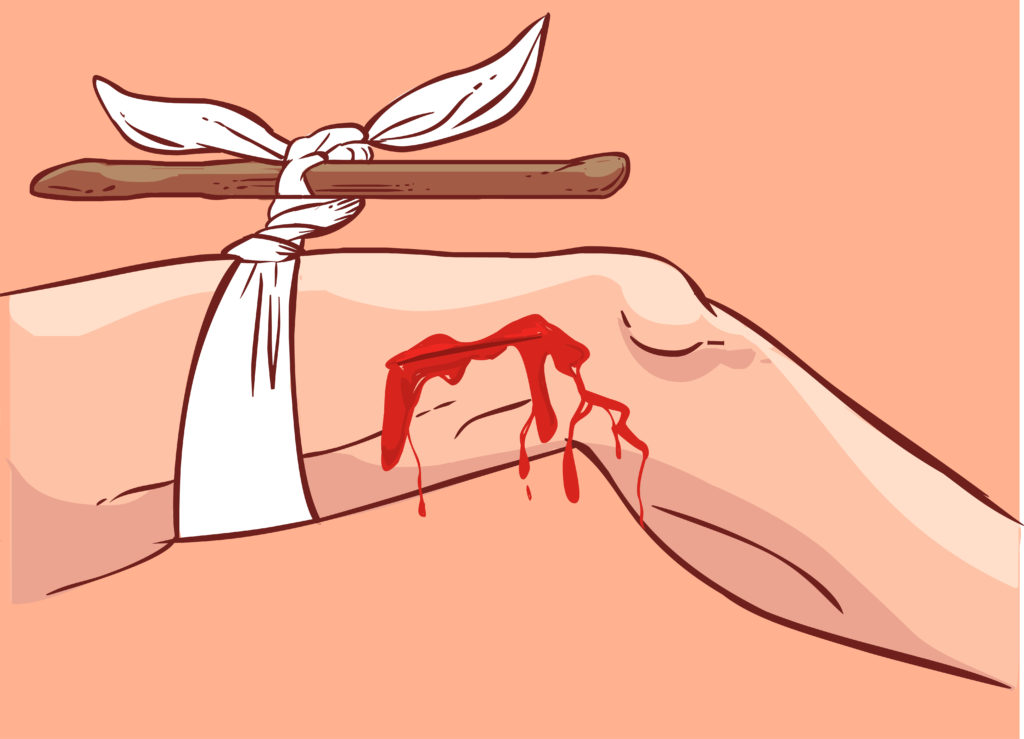If you do not have a commercial tourniquet, you can create improvised tourniquets using something flexible such as a triangular bandage, a scarf or a necktie. However, you should not use a thin flexible material such as a shoelace, string or a wire. If you were to use something like this, you may end up cutting into the skin, creating another wound which needs to be dealt with. Make sure that the Emergency Medical Services are on their way if the bleed is serious. If it is not, then you will not need to use a tourniquet. Once you have ascertained that a tourniquet is needed – i.e. direct pressure and haemostatic dressing are not working – you need to work fast.
What to Use
Belts are what lots of people think work as improvised tourniquets, but only if done so correctly. It is very unlikely that you will be able to buckle a belt tight enough to stop arterial bleeds. Since arteries lie deeper than veins, the tourniquet needs to be applied tightly enough. Therefore you can use belts as the piece of flexible material, but do not use the buckle to tighten it! To tighten the improvised tourniquet, you will also need a long, sturdy object. This could be something such as a screwdriver, a jackscrew handle, or even a small broom handle. Something such as a pen or a small stick will not be strong enough. When you are tightening the tourniquet, it is very likely that it will break and be rendered useless.
See also the Tourni-Key Plus from citizenAID®.
Read our page dedicated to tourniquet use for more information. To apply tourniquets properly, we recommend that you take part in a relevant course provided by ProTrainings.uk.
For more information on training courses, visit our “Courses” page which also includes our First Responder and First Person on Scene (FPOS) Courses.

